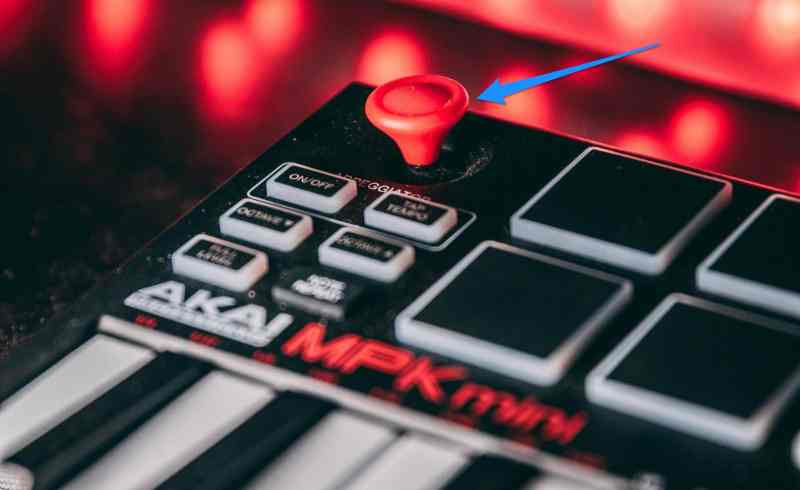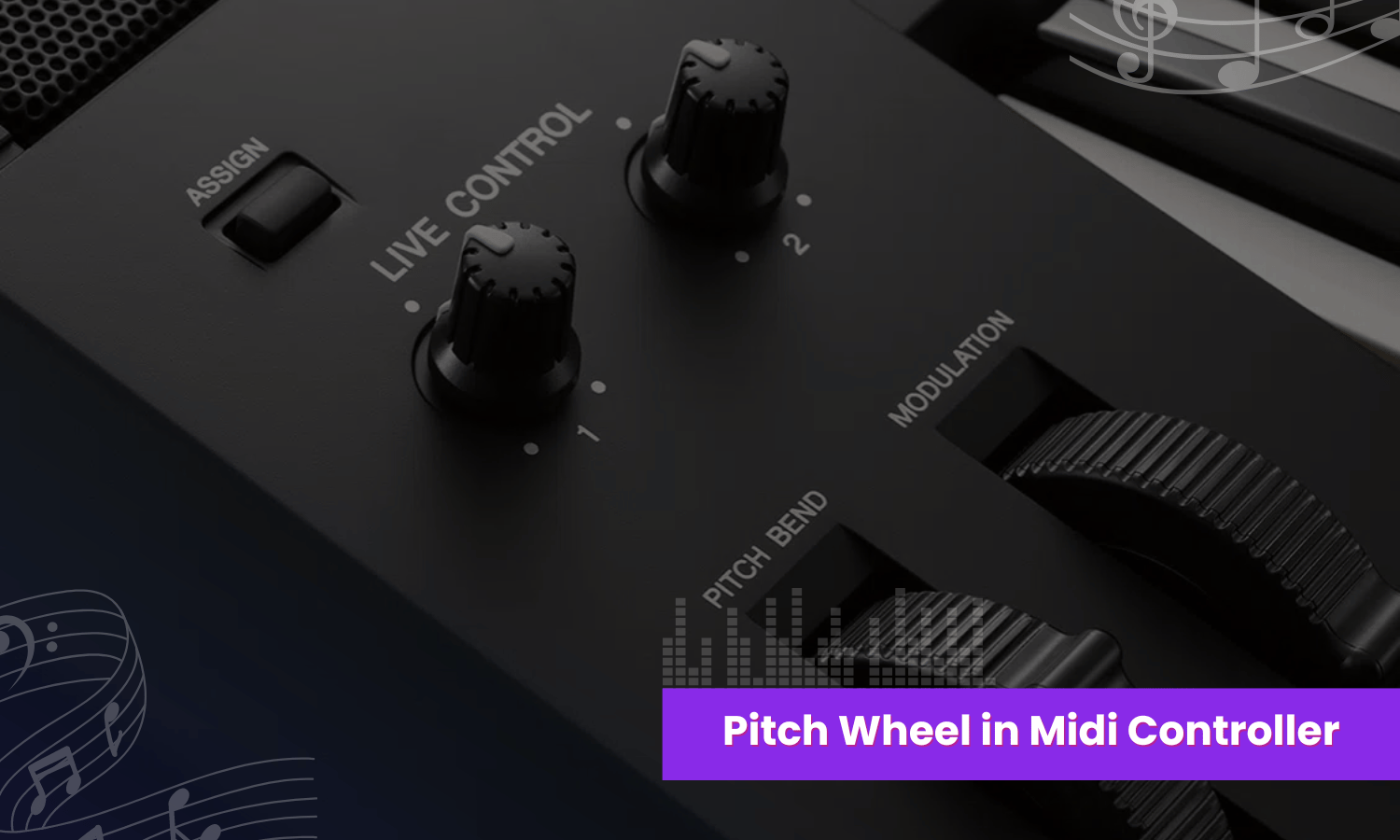A pitch wheel is a type of controller found on electronic music keyboards and MIDI controllers, designed specifically for bending the pitch of notes up or down. The pitch wheel is normally implemented as a wheel that the user can turn, touch, tilt, glide to change the pitch in a smooth, continuous fashion, allowing for subtle inflections during performances.
Pitch Bend wheels transmit MIDI pitch bend messages to indicate how much the pitch should be raised or lowered from the original note value. The MIDI protocol allows pitch bend values ranging from -8192 to +8191, corresponding to a pitch change of -2 to +2 semitones by default.
How does a pitch Bend wheel work?
The pitch wheel is spring-loaded to return to the center or zero position when released. Turning the wheel forward, away from the performer, sends increasingly positive pitch bend values and thus raises the pitch. Turning the wheel backward, or toward the performer, sends increasingly negative values to lower the pitch.
The MIDI pitch bend message gets sent continuously as long as the wheel is turned. When the wheel is released and returns to the spring-loaded center, a pitch bend value of zero is transmitted. This brings the pitch back to the original note value.
What is a pitch Bend wheel used for?
Pitch wheels allow for expressive pitch manipulation during performances and recordings. Subtly bending notes sharp or flat can emulate qualities of the human voice and acoustic instruments. Pitch wheels are commonly used with synthesizer sounds, especially solo wind and string instrument patches.
Violin and guitar sounds are often played using the pitch wheel to add vibratos and slides between notes. Wind instrument patches can be played with pitch inflections that mimic breathing techniques used by saxophone and brass players. Electric piano and clavinet sounds also respond well to pitch wheel articulations.
Do all MIDI keyboards have pitch Bend wheels?
The vast majority of MIDI controller keyboards come equipped with a pitch wheel. Full-size 88-key digital pianos may lack pitch wheels, as they are optimized for realistic piano performance. But most MIDI keyboards such as 25-key, 61-key, 49-key, and 76-key, generally provide a pitch bend wheel along with a modulation wheel.
Are there alternatives to a pitch wheel – Different Type of Pitch Bend Interface
While a spring-loaded wheel is the most common design, some MIDI controllers use an alternate mechanism for pitch bending, such as:
1. 4-Way Thumb Joystick

This is the most intuitive way of pitch bend that can be moved up/down along with left/right at the same time. The most popular 25-Key MIDI controller, Akai MPK Mini MK3 comes with a 4-Way Thumb Joystick for Pitch Bend. It occupies less space in the chassis and is suitable for a small, compact MIDI keyboard.
2. Capacitive Touch Strip

Here is another alternative for the Pitch Bend wheel. Instead of springs, wheel, and whole mechanism, there is a capacitive touch strip. Simply touch the strip and move your finger to bend the pitch. The prime example of a MIDI keyboard that uses using Capacitive touch strip is Arturia MiniLab 3. Almost every Arturia MIDI keyboard is equipped with a Capacitive Touch Strip.
3. Glide Ribbon
Gliding the keys to bend the pitch is the most advanced way that can be seen in Roli’s Seaboard. Simply glide the notes on a certain area of the keyboard and it will send the pitch bend signal.
The ribbon and joystick may provide a larger range of bend values for more dramatic effects. These 2 interfaces also offer more control instead of the Pitch Bend Wheel. Unfortunately, most MIDI keyboard only comes with a Wheel instead of a Touch Strip and Gliding Ribbon as it is cheaper, keeps the cost in control and is price affordable for the users.
Recommended Articles
How is the pitch range set?
The maximum pitch bend range is configurable, although ±2 semitones are standard. For example, the range could be set to only ±1 semitone for more subtle inflections. The pitch bend sensitivity is normally set globally in the MIDI synthesizer or DAW software receiving the messages. However, some high-end keyboards provide options to set the range per program or per channel.
Conclusion
In summary, the pitch wheel is an essential performance controller for adding expressiveness to synthesizers and virtual instruments. Spring-loaded with a center detent position, the wheel allows for real-time pitch inflections by sending MIDI pitch bend messages depending on its forward/backward rotation. Pitch wheels help emulate techniques from acoustic music, making synthesizers, and MIDI Keyboard controllers more versatile and dynamic.

